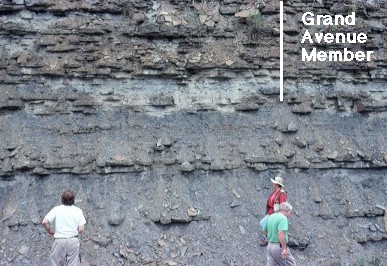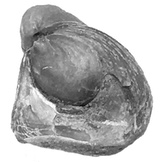Sequence Stratigraphy of the Type Cincinnatian Series: 20-m cycles
Within offshore units such as the Kope Formation, meter-scale cycles are bundled into an intermediate, or fourth-order, scale of cyclicity characterized by systematic changes in meter-scale cycle thickness. These fourth-order cycles are typically around 20 m thick and can be recognized by a series of shale-rich, thicker than average meter-scale cycles that pass upwards into limestone-rich, thinner than average meter-scale cycles. These 20-m or 4th order cycles are interpreted to reflect changes in water depth; however, whether these changes were driven by eustasy, subsidence rates, or changes in sediment supply is unknown.

These 20 m cycles are often reflected in lithostratigraphic nomenclature. For example, the Grand Avenue Member (left, top) is the limestone-rich unit at the top of one of these 20 m cycles. Similarly, lithostratigraphers working near Cincinnati have recognized a tongue of the Kope extending into the lower Fairview (Wesselman Tongue) and and a tongue of the Fairview that projects into the upper Kope (the North Bend Tongue). The North Bend Tongue of the Fairview is the limestone-rich unit at the top of one 20 m cycle and the Wesselman tongue of the Kope is the shale-rich unit at the base of the next 20 m cycle.
A systematic search for 20 m cycles has only taken place in the Kope and lower Fairview Formations. Their existence in the remainder of the type Cincinnatian Series is unknown.

